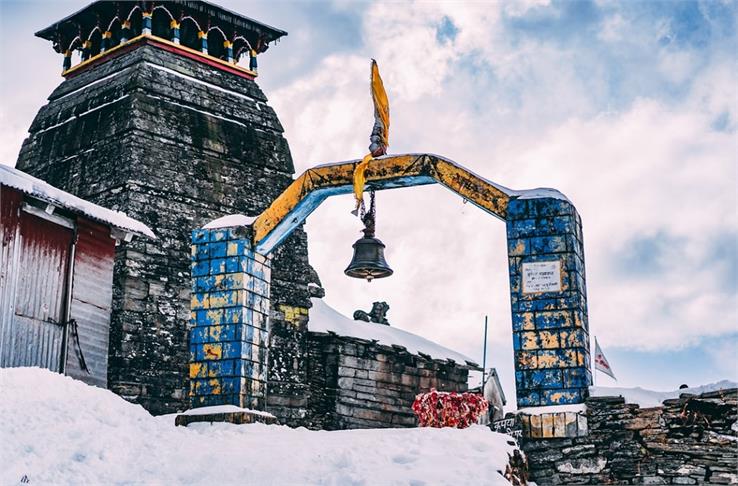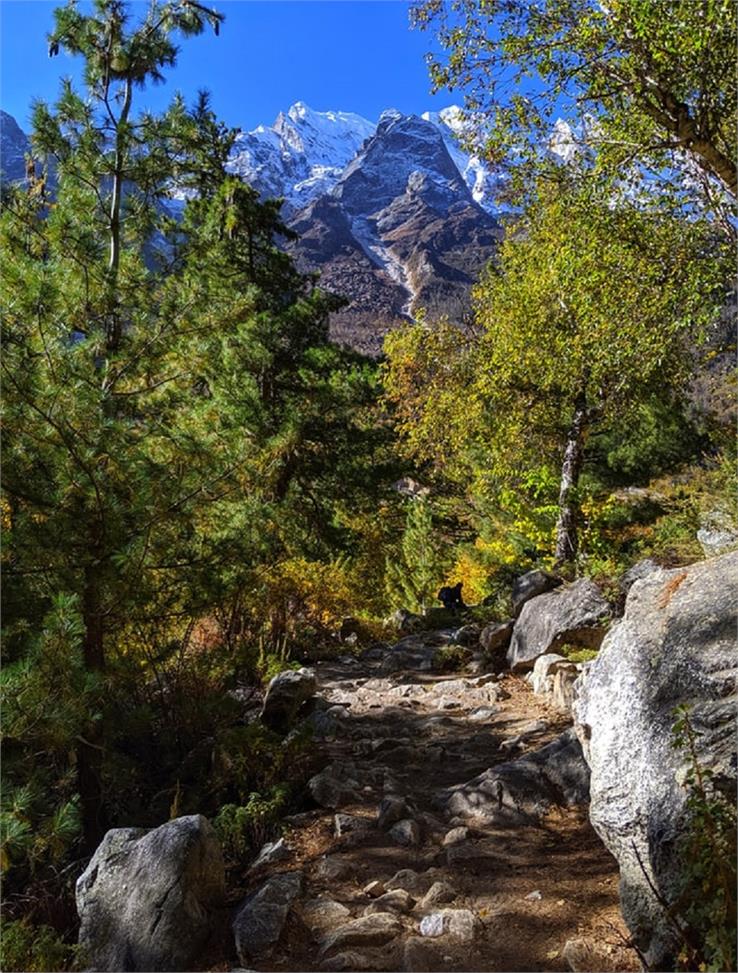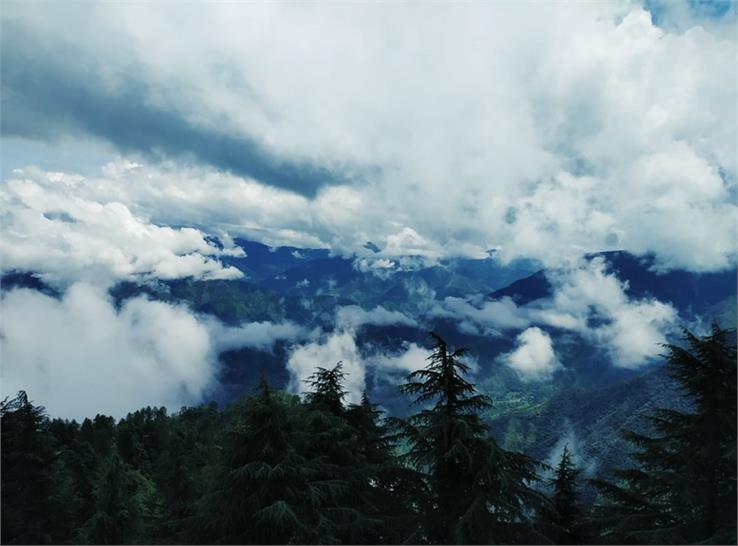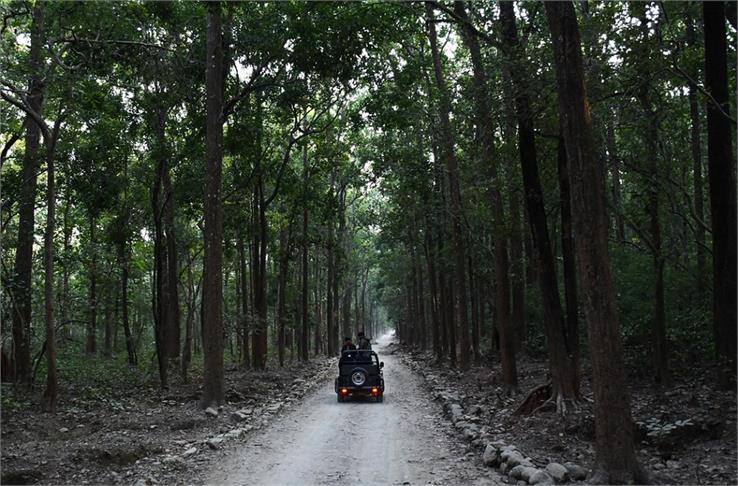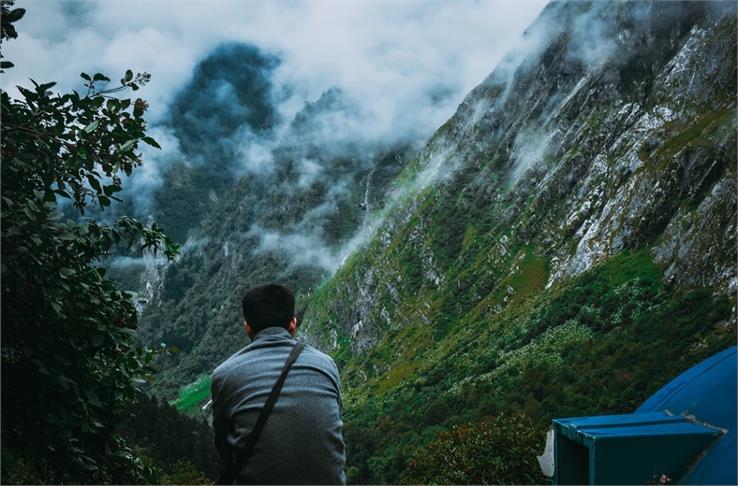Uttarakhand - Its Facets and Aspects
From the depth of water bodies to vastness of the sky, if there is any place on the landscape of India that defines beauty, it’s Uttarakhand. Formerly known as Uttaranchal, Uttarakhand is an exquisitely beautiful state in the Northern part of India. If one wishes to plan a rejuvenating vacation to get rid of dryness and hotness that mostly defines the climatic conditions of the city life, this hilly region comes across as an ideal location. It might be enlightening to know the fact that its referential recognition came in August 2006, when India’s Union Cabinet agreed to the demands of the Uttaranchal State Assembly. As a result of which, the influential members of the Uttarakhand Statehood Movement also granted permission to let Uttaranchal be known as Uttarakhand.
The name might have changed, but its charm and aura remain similarly captivating and attractive.
Often referred to as ‘Devbhumi’ (meaning ‘The land of Gods’), owing to the significant number of Hindu temples and centers of pilgrimage which are found in this state. It is a mesmerizing and multifaceted state with an excellent plethora of culture and nature which complements and enriches each other. Globally acknowledged and appreciated as a state with a beautiful canvas of nature and resplendence, its prestige rests predominantly on the Himalayas, the Bhabhar, and the Terai. The 27th state of the Republic of India, Uttarakhand, was created from the Himalayan and the adjoining northwestern districts of Uttar Pradesh. Uttarakhand circumscribed by the Tibet Autonomous Region from the North, the Far Western Region, Nepal from the East, the Indian States of the Uttar Pradesh from the South, and Himachal from the west. Uttarakhand is a state with an expanded arena and fertile geographical dimensions. It is divided into two regions, i.e., Garhwal and Kumaon, with a total of thirteen districts. The interim capital of Uttarakhand is Dehradun. Dehradun, interestingly, happens to be the largest city in the region. On religious parameters, about 83% of the people belonging to this state follow Hinduism, with Islam being the least supported religious tenet. With beauty, mysticism, and richness of resources all abound, Uttarakhand generally tops the list of a favorite tourist spot by many.
History
Historically, Uttarakhand has a vast arena of factual edges to offer. Since prehistoric times, archaeologists have supported the testimony of the existence of humans in this state. During the Vedic age of ancient India, this region formed a significant portion of the Kuru and the Panchal kingdoms. In the 2nd century BCE (also recognized as the Vedic age of ancient India), an ancient form of ‘Shaivism’ was practiced by the first influential dynasty known popularly as ‘Kunidas.’ Specifically, the region was consolidated under the Garhwal kingdom and the Kumaon kingdom during the medieval period. In 1816, modern Uttarakhand was attributed to the British, as per the conditions of the Treaty of Sugauli.
The erstwhile hill kingdoms of Garhwal and Kumaon are known to be traditional rivals. However, the proximity of various adjoining ethnic groups and the complementary nature of their geography, culture, economy, and language aided in creating amicable bonds between the two regions. This bond strengthened and was further made strong during the Uttarakhand movement for statehood in the 1990s. It might be enlightening to register the fact that on 24 September 1998, the Uttar Pradesh Legislative Assembly and Uttar Pradesh Legislative Council passed the Uttar Pradesh Reorganization Bill, which initiated the process of creating a new state. In 2000, the parliament passed the Uttar Pradesh Reorganization Bill, and this is how Uttarakhand came into being as the 27th state of Republic India.
Geography
The significant proportion of Uttarakhand, i.e., 86%, is mountainous, and the forests cover 65 % with total expansion of 53, 483 km square. High Himalayan peaks and glaciers cover most of the Northern section of the state. The state of Uttarakhand evinces a fantastic amalgamation of water bodies that mostly have a traditional and religious edge to it. Two of the most significant rivers in Hinduism originate from the Himalayan peaks situated in this region: The Ganges at Gangotri and the Yamuna at Yamunotri. These two, along with Badrinath and Kedarnath, form the globally acknowledged the ‘Chota Char Dham,’ a holy pilgrimage for the Hindus.
Lying on the southern slope of the Himalayan range, the climate and the vegetation of Uttarakhand keeps on varying with elevation, from glaciers at the highest mountains to subtropical forests at the lower elevations. The highest elevations are canopied by ice and the bare rock. Below them, between 3,000 and 5,000 meters, which could also be estimated as about 9,800 ft. and 16,400 ft. respectively are the alpine shrubs and meadows.
Below 1,500 meters elevation, one observes that Himalayan subtropical forests lie, in all its majesty and grandeur.
This state indeed exemplifies the rich and fertile interaction between nature in its true essence and also demonstrates how human intervention provides a limiting circumference to it. Strikingly, nature, too, has shown it’s a devastating aspect to Uttarakhand. In June 2013, a hefty rainfall led to a massive flood due to which many people died, and numerous were missing. Known amongst Indian media as “Himalayan Tsunami,” this unfortunate event demands appropriate allusion here; it damaged the land exponentially, and the level of water bodies of Uttarakhand kept on fluctuating for the most extended period of the time.
Climate
With an outstanding aura of beauty and tranquility surrounding throughout the year, Uttarakhand is a region with a moderate temperature that does not fluctuate except rare calamities. It has mainly two different climatic zones, namely the hilly terrain and the smaller plain zone. The weather varies, respectively, depending on the particular place. The specific climatic conditions, according to the various seasons, are, precisely as follows:
Summers
More often than not, summers in Uttarakhand are pleasant, but there are certain places where the hot climate may en-nerve people. The temperature, in places, like Haridwar and Rishikesh, can reach even the 40 degrees Celsius mark. Coupled with the humidity, it might be pretty uncomfortable. Nominally, the summer season in Uttarakhand extends from April to June. Visiting Uttarakhand during these months should be ideally avoided, as it does not allow tourists to enjoy the splendor of the state due to the scorching heat.
Winters
Excessively cold and teeth-clattering winds aptly define the winters in Uttarakhand. Many places receive regular rainfalls, and hence the weather in winters remains moist and cold. The temperature during the winter season ranges from sub-zero to about 15 degrees Celsius. The winter season in Uttarakhand generally extends from October to February. People who wish to demystify the splendid layers of nature in its pristine form can visit Uttarakhand during winters and can unravel the greenery in a fresh and captivating ambiance.
Monsoon
The monsoon season lies from July to September. The temperature is conducive to promoting tourism and sports activities in this exciting state. The monsoon invites people with adventurous and inquisitive streaks in their veins from around the globe. Interestingly, the state receives 90% of its rainfall during this season. Being one of the most pleasant seasons of Uttarakhand, the monsoon illustrates the scenic facets of Uttarakhand and the divine awe of mountains in its most sublime form.
Best Time to Visit
With freezing sensations in the air and the spirits-lifting joy in the surroundings, the monsoon, i.e., July to September, is the most suitable time to visit Uttarakhand. It is not only conducive to promoting adventurous sports like rock-climbing and trekking but also allows visitors to embark on water games, sight-seeing and exploring the beauty and charm of this beautiful hilly-state.
How to Reach
By Rail: There are understandably only a few major cities with railway stations located primarily in hilly regions. Rishikesh, Dehradun, Haridwar, and Nainital are amongst a few of the cities that have railway stations. These stations are favorably well-connected to most of the neighboring states.
By Road: There are many regular private and state bus services that can be found providing services throughout the country. However, one must keep in mind the fact that due to its hilly slopes, there are probabilities of landslides, but one has to understand the fact that there are not many alternatives available. If carefully handled, road–trips through Uttarakhand can be pure bliss.
By Air: Uttarakhand has many domestic airports. Two of the most often opted are Dehradun’s Jolly Grant Airport and Pithoragarh’s Naini Saini Airport. Nevertheless, at the peak time of vacations and monsoon season, it’s a difficult task to get the air-tickets for Uttarakhand. So, it’s highly advisable to make the bookings fairly advanced if one wishes to use this mode of transportation to reach Uttarakhand.
Places to Visit
Uttarakhand provides ample opportunity to the people deeply rooted in religious beliefs as well as the folks who enjoy the serenity of the natural environs. It’s a highly rejuvenating tourist spot that attracts visitors from all the corners of the world due to its local color and traditional heritage. Amongst multiple famous places to visit, the most popular ones are given below:
Dehradun
The capital of Uttarakhand, situated at Himalayan foothills, the geographical location of Dehradun is picturesque with Himalayan ranges in a proper glance and River Yamuna and Ganges on either side of the city. Besides the natural extravaganza, the place is quite famous for the fantastic architectural display by some of the most ancient constructions. Some of the leading attractive spots of Dehradun include:
- Malsi Deer Park
- Robber’s Cave
- Mindrolling Monastery
- Sahastradhara
- Rajaji National Park
Nainital
Famously referred to as the ‘Lake District’ of India, Nainital is an ideal location for those who wish to forget the hustle-bustle of the city life in the lap of nature. The visual delight and the mental calm is irresistible. Surrounded by mountains from all the sides, with clear, blue sky shadowing the green lands, Nainital can be regarded as the crown of Uttarakhand, in terms of its charm and visual quality.
The most sought-after locations in Nainital are:
- Tiffin Top
- Naini Lake
- Nainital Zoo
- Thandi Sadak
Mussoorie
Mussoorie is known as the ‘Queen of the Hills,’ rightly so. With excellent climate throughout the year and mil temperature enveloping the place, it is indeed ‘beauty personified.’ There are so many places that provide immediate respite to the people tired of urban life. However, the most amazing ones are:
- Christ Church
- Lal Tibba
- Cloud’s End
- Happy Valley
Besides all these wondrous tourist spots, Uttarakhand is precisely known for its beautiful and enamoring religious locations such as Badrinath, Kedarnath, Haridwar, Rishikesh, and Almora. Kausani is also one of the most frequented holiday spots. Uttarakhand comprises the unruffled harmony with life that caters to people with varying inclinations. For the lovers of nature, National parks like Nanda Devi Biosphere Reserve, Valley of Flowers National Park, Rajaji National Park, and Govind Pashu Vihar Wildlife Sanctuary are sheer bliss. When nature and culture blend harmoniously, Uttarakhand demonstrates the visual spark that this state wraps within its layers.
Culture
Uttarakhand's highly multi-layered ethnicities have formed a rich literary tradition in many languages, including Hindi, Kumaoni, Garhwali, Jaunsari, and Bhoti. Many of its cultural tales and fables originated initially been in the form of lyrical ballads and were chanted by skilled classical singers. Presently, they are seen as the classics of Hindi literature. Ganga Prasad Vimal, Manohar Joshi, Shekhar Joshi, Sangeet Natak Akademi Awardee Mohan Upreti, and Sahitya Akademi Awardee Manglesh Dabral are some famous literary figures from this region. Prominent philosopher and environmental activist Sundarlal Bahuguna and Vandana S. are also from Uttarakhand.
Various dances of this diverse region are linked with the mobility of life and the significance of existence. It illustrates, artistically, a wide range of man's sentiments. Langvir Nritya is a prevalent dance form practiced singularly by men, and its unique feature is that its 'mudras' provide striking parallels with gymnastic movements. Barada Nati folk dance is also a widespread dance form practiced by the locals of Uttarakhand's capital, i.e., Dehradun. This dance generally performed during the pious, religious occasions. Besides, Jamaica, Chholiya, Chauphula, and Hurka Baul are other essential dance forms of Uttarakhand that reflect its culture and traditions.
Additionally, music is also a defining part of Uttarakhand culture. Khuded, Chopati, Basanti, Mangal, are the popular forms of folk songs. These folk songs chant the melodies of the traditional heritage and ancient links of the state. "Bedu Pako" is also a famous folk song of Uttarakhand with blazing fame around the globe and highly respectable status within the state premises. Its great value lies in the fact that it is locally adored and appreciated as the "unofficial song of Uttarakhand." Since it's a state with strong mystical and superstitious beliefs, the music here is also seen as a tool to invoke divine figures and gods. For example, Jagar is a popular form of 'Bhavana Upasana' in which the Jagiya sings a saga addressed to the gods by reciting ancient epics such as the Ramayana and the Mahabharata. What is unique about 'Jagar' is that it doesn't sing the glory of the gods concerned ungrudgingly; they mainly sing about the adventures as well as the exploits of the deities. It is enlightening to mention here that Narendra Singh Negi and Mina Rana are famous folk singers of the region.
Sports
Encapsulated within the valleys and hills of Uttarakhand are multiple possibilities of enjoying and engaging oneself in adventurous sports and exciting activities. With cold, serene climatic conditions and greenery surrounding the entire area from all sides, the embalming effect of nature encourages visitors to give rein to their sporty streak and indulge in some fun and joy. Few of the most interesting and exciting activities practiced in Uttarakhand are:
- Zip Flying
- Paragliding
- Trekking
- Wild Life Exploration
- Rafting
- Mountain-climbing
- Bungee Jumping
- Cable Car Rides
Adventure enthusiasts can have the craziest and memorable experiences of their lifetime in Uttarakhand. From water to sky, it covers the entire geography in its erratic patterns of sports and games.
Festivals
Fairs and fests of all kinds keep the rhythm of activity balanced throughout the year. Uttarakhand, a happening state, is ever immersed in religious or adventurous celebrations. Since it aligns closely with mountains and rivers, the aura of festivities and joyous get-togethers is always raised by the cool breeze and rejuvenating winds that fill this hilly state with happiness. Moreover, the festivals that are celebrated in Uttarakhand are distinctive and colorful that takes into consideration the different cultural and religious factors. Basant Panchmi, Khatatua, Kandali, Nandadevi Raj Jat Yatra, Janopunyu, Hill Jatra, Jageshwar Fair are some of the most amazing celebrating events of Uttarakhand that keep the spirit of the tourists as well as the locals alive. What is appreciable about these fairs/festivals is that despite the exceedingly turbulent history of this state, the deep-rooted tradition has been kept alive by ceremoniously singing the folk songs and illustrating the folk culture through dance and other similar activities.
Most significantly, the fairs of Jauljibi, Thal, and Bageshwar have been closely related to the trading activities of the people while, on the other hand, festivals of Syalde, Dwarahat, and Devidhura gain importance from the cultural and religious point of view. Most interestingly, Maha Kumbh Mela, held after every twelve years at the coast of sacred river Ganges in Haridwar. The fairs and festivals attract devotees and people with the religious bent of mind from across the globe. It is a significant festival, not only for Uttarakhand but for the entire country.
The people of Uttarakhand also celebrate many Indian festivals. Ganga Dusshera, Dakar Puja, Olga, Ghee Sankranti are some of the most popular festivals that are enthusiastically celebrated in this ‘divine’ state. Ghughutia and Ghuman Ekadashi are also the most significant festivals of Uttarakhand. In addition to all these events/fests, the people come unitedly to mark the togetherness by celebrating:
- Phool Dei
- Chipola jaat
- Baat Savitri
- Harela and Bhitauli
- Guru Kailapeer Fair
What to Eat
Food is the one factor of an ideal-tourists’ spots one does not want to compromise. Uttarakhand does not ask you to do so. From people with the active sweet tooth to the people who swear by spicy junk, Uttarakhand has the capacity and efficiency to satiate the taste–buds of all. With rich, local flavors and oriental spices collected freshly from the gardens, the cuisines and desserts that Uttarakhand offers to the tourists are simply mouth-watering. Food is often cooked in pure ghee; when it can be afforded - and is usually high on red chilies and hot spices.
Popular dishes include Chainsoo (a meal of black gram dal), Ras (a mixture of pulses), Kafuli (a spinach dish), and local bread such as Chapattis, Mandua ki Roti, and Gahat ka Paratha. Chutneys, especially made of sesame seeds and hemp seeds perk up the taste to an absolutely another level of delicacy.
Moreover, popular sweet dishes include ball mithai of Almora, studded with tiny globules of sugar and made from milk and singodi, made from coconut and khoya, and wrapped in a fragrant leaf.
However, it primarily takes care of local food. For the tourists who wish to treat themselves with exquisite cuisines may opt from the following:
- Swala
- Gulgula
- Chainsoo
- Baadi
- Arsa (dessert)
- Palau
Where to Shop
Who does not enjoy shopping? And who would not want to collect the invaluable souvenirs that Uttarakhand’s markets and shopping spots have to layout to the tourists? Traditional and cultural, ethnic, semi-modern fabrics and rich, and indigenous spices abound in Uttarakhand markets. It’s so expanded and has such wide varieties to offer that one finds it difficult to decide upon what to take and what to leave. Such irresistible deals and such authentic materials – indeed, the markets of this extravagant state are a source of supreme delight for those who are sworn, shopaholics.
Uttarakhand includes various woodcrafts, woolen articles, and Gharwali paintings, unique handmade accessories, and rare gems. Unique Tibetan products could be bought from Dehradun’s Tibetan Market. Semi-precious stones, jewelry, carpets, and trendy outfits - one can get them all at one place in Dehradun’s famous market. Besides, one can buy the excellent quality of Basmati Rice from the famous Paltan Bazaar of Dehradun. In Haridwar, people can find the holiest items at reasonable prices with divinity and sublimity of the sacred Ganges attached to it. Rudraksha pendants, beaded ornaments, mesmerizing varieties of deities, designs, and jholas are famous all over the world for their uniqueness and authenticity.
Besides, Uttarakhand will undoubtedly attract tourists who love collecting candles. Beautiful handmade candles with all the imaginable shapes, sizes, and pleasant fragrance are instant hits. This state is also famous for organically produced apples, cherries, mulberries, and strawberries. Tourists usually carry them along as they capture the richness and the freshness of the air of Uttarakhand.
Amongst many options, the best of the bests markets/ malls in Uttarakhand are:
- Ashley Hall (Rajpur and Gandhi Road)
- Connaught Place
- Lakshman Jholapur Market
Economy
Uttarakhand is one of the fastest-growing economies, apart from Gujarat and Bihar in the country. According to the data provided by the Central Statistical Organization, the growth rate registered in the Gross State Domestic Product (GSDP) of Uttarakhand in the year 2011 was 9.31%. Its actual GSDP increased by 13.7% during the period spanning 2005 to the year 2012. Also, pegged at approximately ₹ 82,193 for FY 2012, the State per capita income of this advancing state exceeds the national average of ₹ 60,603. By universal consent, it accedes that this high increase is primarily due to the growing investor confidence. It was gradually building trust in the New Industrial Policy, which was proclaimed by the Central Government in the year 2003, according to which the new and rising investment was offered to relieve tax benefits. The more exceptional achievement is that it did not limit itself within national boundaries, this policy related to new industries managed to attract a prominent FDI of US $ 46.7 million. This data is documented up to October 2009, as released by the Reserve Bank of India.
In addition to it, as elsewhere in India, agriculture remains the predominant sector of Uttarakhand Economy. The major crops produced in this state are Basmati Rice, wheat, coarse cereals, groundnuts, soybeans and sugar cane, pulses and oilseeds, etc. It is generally conceded that the world-famous, aromatic Basmati Rice is an original native of this region of India, though now, it is produced at an ever-increasing rate in the many areas of the country.
On the other hand, the nourishing mountain climate has helped this state to come across as a leading producer of non-seasonal vegetables – from cauliflower to peas, from tomatoes to cabbage and from peas to potatoes, everything is grown in Uttarakhand almost in all the seasons. In addition to these principle agricultural productions, a large percentage of orchards in Uttarakhand provides ample space for developing and producing many fruits such as apples, plums, peaches, litchis, oranges, and apricots. Apart from it, it has lately become an exceedingly efficient state in producing non-seasonal fruits like strawberries. These increasing and strengthening fruit- processing industry has helped significantly in the overall progression of the state. It has also aided in supporting an indigenous beekeeping industry (Apiculture).
Being in the vicinity of river Ganges and a few others, the state is blessed with flourishing ‘hydropower’ industry connected to the entire state. It is only because of these water bodies such as the Ganges that Uttarakhand could undertake serious projects like ‘Tehri Dam.’ Tea estates, minerals, transports, horticulture, and tourism also add significantly to the economic dimension of Uttarakhand. About 65% of its overall geographical area lies in the areas of forests. This forest region provides shelter to prospering biodiversity of Uttarakhand, with a large proportion of flora and fauna species, most of which are threatened by the fear of extinction. Ranging from the well- known Jim Corbett National Park and Valley of Flowers to Nanda Devi Biosphere Reserve to the Rajaji National Park, many wildlife preserving sanctuaries are active throughout the state to battle the enormous problem of endangered animals and plants. The sincere effort of Uttarakhand’s Wildlife Association has been lately showing practical consequences too. Also, Uttarakhand remains unrivaled when it comes to strengthening the economy through industrial activities and herbal and medicinal plant production and distribution. Talking precisely about the extent of diversity of flora and fauna in this hilly region, one observes that it has a total of 34,651 km, The square area under the forest surface. It is a very considerable ratio since it comprises about 65% of the overall area of the state. Being a residence to many rare varieties of herbs and animals, Uttarakhand has many wildlife sanctuaries and reserves. The oldest National Park i.e., Jim Corbett National Park and Valley of National Park located in Chamoli district, are established in this state only, and they together are an essential part of the UNESCO World Heritage Site.
In terms of animals’ population and variety, Uttarakhand is a fascinating state. Leopards are one of the animal species which are found both on hills as well as low-steeped jungles. One finds many types of felines in this broadly expanded state like Jungle cats, leopard cats, and fishing cats are examples of mostly discovered felines. In addition to these, mammals such as Yellow-throated Martens, Indian Pangolins, Langurs, Mongoose, Otters, and Elephants rule the forest lands. The water bodies in this region are mainly inhabited by Ghariyas, Marsh Crocodiles, and few other reptiles. However, the rivers also provide a glimpse of Softshell turtles and Indian Sawback turtles. Beautiful and wonder-inspiring birds like orange-breasted pigeons also add the charm of this state. While talking about plants and trees, one needs to specially mention Evergreen Oaks, Conifers, Rhododendrons, Acacia Catechu, and Bauhinia Variegata that cover the state with a large, splendid green blanket. Sadly, an unfortunate event that occurred in the year 2006 infamously known as ‘Uttarakhand forest fires’ caused massive harm to the resources of the Uttarakhand’s forests, a minor proportion of human-life and many wild animals.
However, despite this potentially damaging incident, the resplendence and the mesmerizing plethora of flora and fauna found in Uttarakhand reigns in the heart of nature lovers and wildlife explorers.
Education
In terms of education and literacy, Uttarakhand is one of the fastest developing states in India. With about 1,040,139 students enrolled in 15,331 primary schools and about 22,116 working teachers, Uttarakhand stands a high probability of emerging as a highly competent and skilled state. If the records of 2011 are to be believed, the literacy rate of the state was 79.63% with 88.33% literacy for males and 70.70% literacy for females. With either English or Hindi as a medium of instruction, the schools in Uttarakhand are increasing day by day. It is a marker of the state’s growing interest in academic excellence.
The educational institutions in this state mainly consist of private and government schools. There are some other establishments also that include the primary schools, high schools, inter-college, technical institutions, and degree colleges. The Department of Education of the Government, regulated under Uttarakhand, defines the major school affiliations. It only recognizes CBSE, CISCE, or the state i.e., Uttarakhand’s Government Syllabus.
For higher education, the most popular and the most reputed institutions/colleges are:
- Indian Institute of Management Kashipur (for Management courses)
- Indian Institute of Technology Roorkee (for technology and management)
- National Institute of Technology Uttarakhand (in Srinagar meant for Technology)
- All India Institute of Medical Sciences Rishikesh (for courses in research and medicine)
Besides these institutions, the prestigious state universities of Uttarakhand are:
- Uttarakhand Sanskrit University
- Uttarakhand Sanskrit University
- Uttarakhand Open University
- Kumaon University
- Doon University
Hospitals
With the competitive vigor in mind, people, irrespective of place and immunity do fall, ill at a highly irregular pace nowadays. However, if in Uttarakhand, the respite lies in the fact that Uttarakhand has efficient medical facilities that bring long-lasting relief to the patients, more often than not. With developing technology and improving medical tools, it has become possible to render a new life to a patient. Some of the most reliable hospitals in Uttarakhand are:
- Brijlal Hospital and Research Centre Pvt. Ltd.
- Jeevan Rekha Hospital
- Mahalaxmi Eye Hospital
There are multiple private hospitals in Uttarakhand that are verified in terms of hygiene standards and reliability quotient. Uttarakhand can be verily esteemed as a state equipped with proper medical aid because of umpteen hospitals and medical centers that take into account all sorts of ailments, injuries as well as problems of the particular functioning of a body part. The list of private hospitals of Uttarakhand is as follows:
- Dr. Futelas Hospital
- City Hospital and Research Centre - Nainital
- Bhandari Hospital Dehradun
- Anant Nursing Home
- Bhagwati Hospital Private Limited
- Bhatnagar Nursing Home
- Combined Medical Institute
- Chamunda Surgical and Laparoscopic Centre
Where to Stay
With well-formatted education’s pattern, well-regulated medical centers, exuberantly plentiful wildlife, multiple options for shopping, and umpteen food joints, Uttarakhand can be undoubtedly ranked amongst the most desirable vacation spots of India. Also, it does not merely limit itself to fun, entertainment, and food; with advanced technological equipment and accelerating business ratio, Uttarakhand can well be envisaged as a flourishing hub on political as well as economic level.
Nevertheless, if one wishes to make a short trip to Uttarakhand to experience this wonderfully expanding state better, one can find comfortable accommodation. Keeping within its scheme of pattern people from all ranks of society, it has modest as well as luxurious accommodations to choose from, mostly with all-inclusive packages. Some of the most comfortable, cozy, and well-ventilated hotels are:
- Shivalik River Retreat Kosi
- Corbett Suman Grand
- Jagirdar Guest House
- Kasmanda Palace
- Hotel Savoy
- Hotel Shikhar
- Hotel Shelesh and Restaurant
To draft and illustrate the beauty and little complex layers of wild-life of the ‘mystical‘ Uttarakhand concerning economic and social progression is not an easy task. To fully understand the wonder and the charisma that Uttarakhand defines, one needs to visit and cherish the windy, breezy moments. Diametrically opposite to the hectic and polluted lifestyle of urban states, Uttarakhand’s fresh, pure, and naturally filtered air uplifts the spirit and is a welcome harbor for all.


